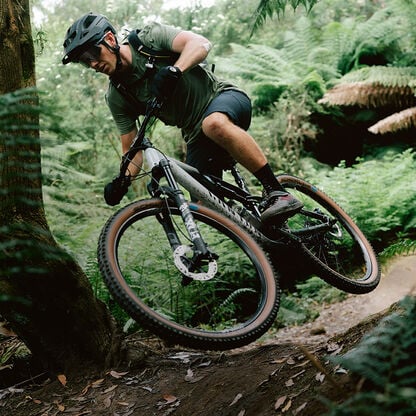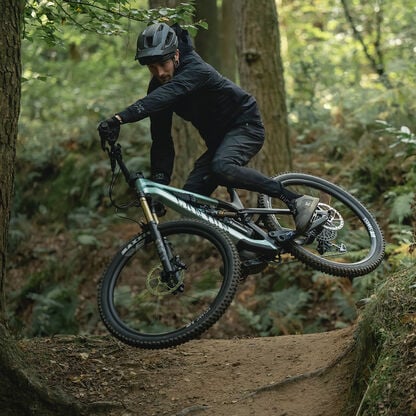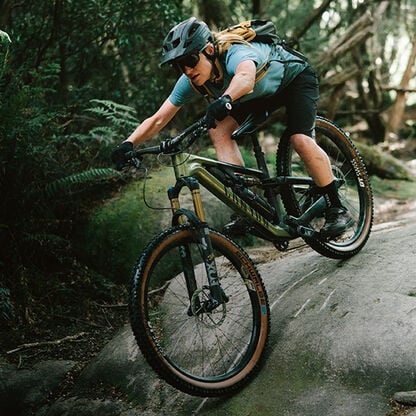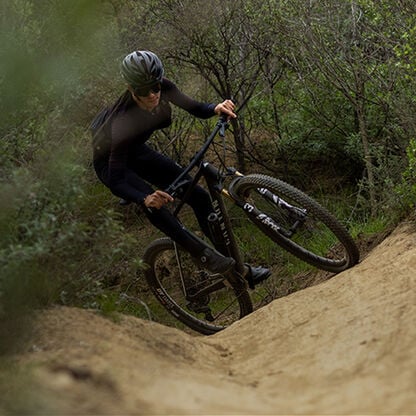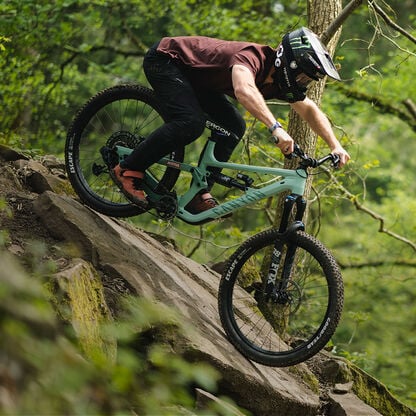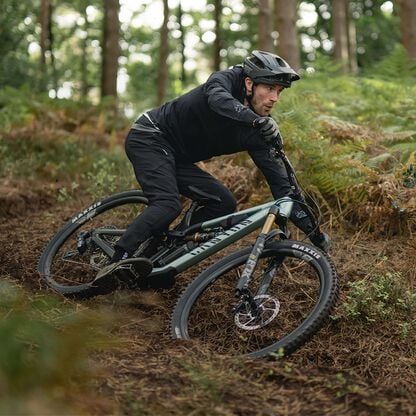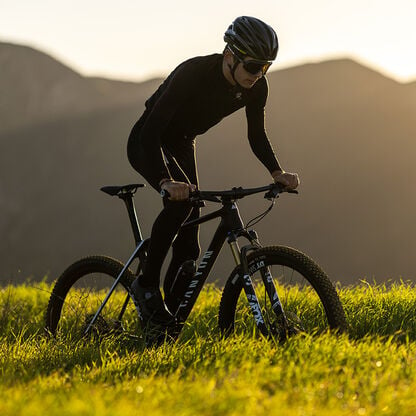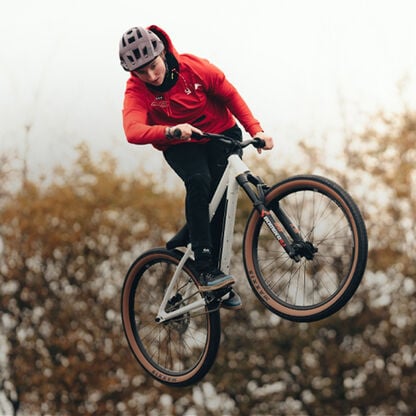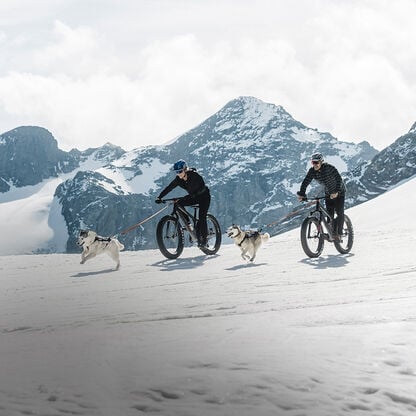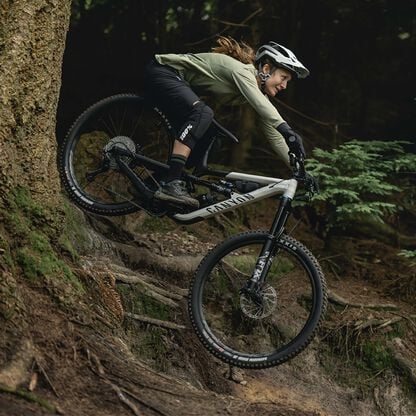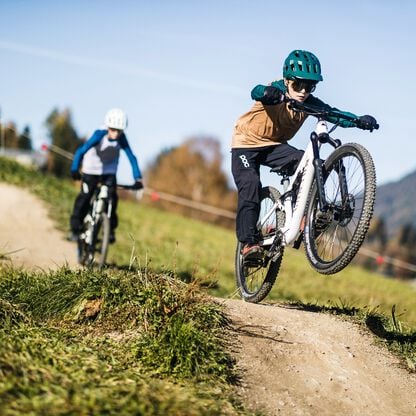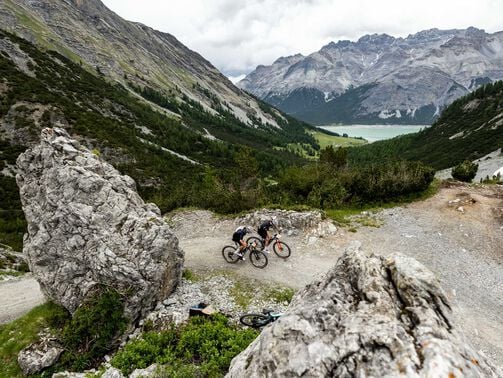Perfect position on your mountain bike: Expert tips for better control
Finding the correct mountain bike riding position can be challenging. This short guide will walk you through the basic steps to help you centre yourself on your bike for challenging trails.
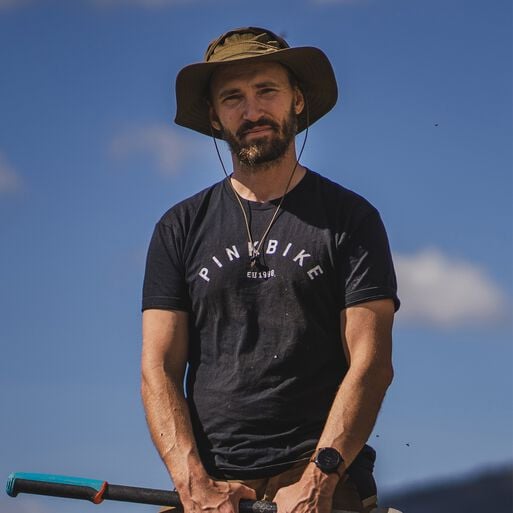

Troy Brosnan has perfect posture on his mountain bike. In his race runs he makes the gnarliest courses in the world look easy. Watching him ride, you need to remember that he didn’t start out by saying “I want to look good on a bike,” but by working out what he wanted to make the bike do. Perfect posture comes from figuring out how to make the bike do what you want to do, then repeating it until it becomes second nature.
If you watch Troy and his teammates race, you will see that they all have slightly different positions on the bike. The truth is that there is no single right answer. Your perfect mountain bike riding position will depend on your body, your riding style and your bike and its settings. What the riding position of every elite mountain bike racer does have in common is a central idea - perfect mtb posture means being centred and comfortable on the mountain bike, ready to respond to whatever the trail throws at you.
Contents
Why is mountain bike riding position so important?
The first step to finding your mountain bike riding position is to make sure your bike fits you correctly, our Canyon positioning system is designed to help you do just that. If your bike is too small you will be scrunched up, which will make it harder to hold yourself in the centre when you are out of the saddle. You may not notice it if you have been riding that size bike for a while, but if you are riding a smaller bike then you will naturally compensate with your posture. If it is too long you will be too stretched out, which means you are not able to use your body’s strength and mobility effectively. The ideal-sized bike should feel comfortable and centred when you stand up out of the saddle with your cranks horizontal.
With the fit done, the next step is to set your contact points. You will want to set your mountain bike in a way that means your controls are comfortable so you can use them easily in difficult situations. If you have to think where a lever is, or reach for it, then you are ever so slightly throwing your posture out and making the ride harder than it needs to be. In difficult situations you want to be able to put all your focus on the challenge ahead of you, not trying to find your dropper post remote or gear lever.
What is proper mountain bike riding position?
A proper mountain bike riding position is crucial for better control and efficiency on the trails. It helps prevent fatigue and reduces the risk of injury. Let's explore the key factors that contribute to a correct riding posture.
What is the ready position?
The ready position is at the heart of good riding posture on a mountain bike. You can use it whenever you are rolling along on your bike about to encounter a trail feature of any kind. Quite simply, it is when you are up out of the saddle with your feet level, your arms and legs at ease and eyes forwards so that you (hopefully) feel ready to tackle the coming feature. This does mean you are not pedalling when you are in this position as you want to be focused on being stable. The idea is that you will be in the centre of the bike ready to use your arms, legs and body weight to respond to the trail. Generally this will be while you are going downhill or are rolling on the flat. Going uphill it can be tricky to maintain enough speed for features without pedalling, so it will be hard to stay in your ready position.
Why is it important to anticipate the trail?
Riding along in the ready position gets tiring after a while. It is much more relaxing to park yourself on the saddle and roll along. You’ll even catch UCI World Cup downhillers trying to catch a few moments of recovery in the saddle on their runs, so there is no need to feel guilty about it. The trick is to know when to transition from relaxed to ready, and for this you need to anticipate.
When you are going through a technical section or a corner it is too late to change your riding position. You need to keep your eyes ahead and get yourself set into the ready position before you reach the obstacle or feature so that when it arrives you are ready to react to it.
How to absorb the bumps
The first goal of our ready position is to absorb the bumps. Yes, all of Canyon’s mountain bikes all have modern trail-eating suspension, but even a 200mm travel downhill bike like the Sender needs help from the rider when the going gets rough. You will want to raise yourself up out of the saddle into a relaxed, ready position. Your cranks should be horizontal, your arms and legs extended but not rigid, and you want to keep your gaze fixed on where you want to go. When you reach the obstacle you want to be able to absorb it without the bike going off course.
As you gain confidence to tackle bigger more fearsome obstacles, this technique will need to evolve. But getting started, if you can ride your bike up a curbstone-sized bump safely then you are ready to head out onto the trails.
How do you steer a mountain bike?
Steering is where things start to get more complicated. Understanding the mechanics of steering will help you understand the riding position you need. While “how do you steer a mountain bike?” sounds like an obvious question, it is a more complex than many realise. Because if you were about to answer “with the handlebar,” you would not be right.
You would not be wrong, because if you are moving slowly then yes, the handlebar is the right tool for the job. But once you get out on the trail and moving, the handlebar should not be a big part of your steering. At speed it is your hips, your weight and your gaze that primarily set your course.
If you are feeling brave (and have a good dentist on call), you can test this easily. Pick your favourite road descent and ride it without touching the handlebars. You will soon see that by looking at where you want to go, you can go there. By angling your body weight into the turn you have even more control of the bike. If you watch a World Cup downhill race, pay attention to their handlebars. On the toughest tracks in the world, racers are rarely more than a few degrees from centre, they are using the handlebar to pump, pull and push rather than turn.

If you have followed this guide so far, you should be approaching corners out of the saddle in your ready position. If the corner is mellow you should be able to get through it with little more than holding your gaze on the exit, your body and bike will naturally follow.
As corners get tighter, you will need to work a little harder. From the ready position, simply raise your inner pedal as you enter the corner. This achieves many things. First and foremost it stops you hitting your crank on the inside of the corner. More importantly, it shifts you hips out in the opposite direction. Looking at the exit, you should notice that if you are going through a right-hand corner, for example, your gaze will be looking to the right, and your right foot comes up shifting your hips out to the left. This naturally puts your bodyweight on a tighter angle than the bike, and as you weigh several times more than a bicycle, this weight helps bring the bike through the corner with ease. When you leave the corner you will want to reset your cranks to horizontal, ready for the next feature.
Practice your MTB posture
There is a lot more to bike posture than we could possibly talk about in a blog post. After all, riders like Troy spend a career trying to find the perfect riding position. What you should hopefully have now is a starting point to tackle corners and small obstacles confidently - once you have learned them.
You can learn all this out on the trail, but you can just as easily practice these skills on a flat piece of road - in fact this probably a better way of doing it. When you first try changing your posture it will feel new and different. It will likely be less comfortable than how you are riding now - and the goal of this process is for you to feel comfortable.
If you take some time to play with this in a safe, simple environment you can find that comfort in a safe environment. Practice will pay dividends later. You don’t need a world class mountain bike facility to do this either, you can learn these basics going around in circles outside your house of apartment, by tackling the curbs in your local (car) park. With enough repetition it should all start to feel natural, so when you come to the trail you are not thinking about your posture but about the ride.
Want to learn more about other MTB techniques and how to improve your skills? Subscribe to our newsletter for expert tips from Canyon athletes and pro-experts.
Discover our Mountain Bikes
Did this article help?
Thank you for your feedback
-
 About the author
About the authorMatt Wragg
Get to know Matt Wragg, the freelance photographer, writer, and self-proclaimed bicycle-breaker based in Nice, France. Despite unsuccessful attempts at XC, trials, 4X, and DH racing, Matt's passion for mountain biking never waned. After a stint in communications consulting, he decided to pursue his love for cycling and moved to New Zealand. Since then, he has traveled the world, chasing trails and building a successful career as a cycling photographer and writer. In 2021, he was diagnosed as autistic and has been coming to terms with it. His bike cellar is a true testament to his love for cycling, housing bikes that range from freeride to cargo.
